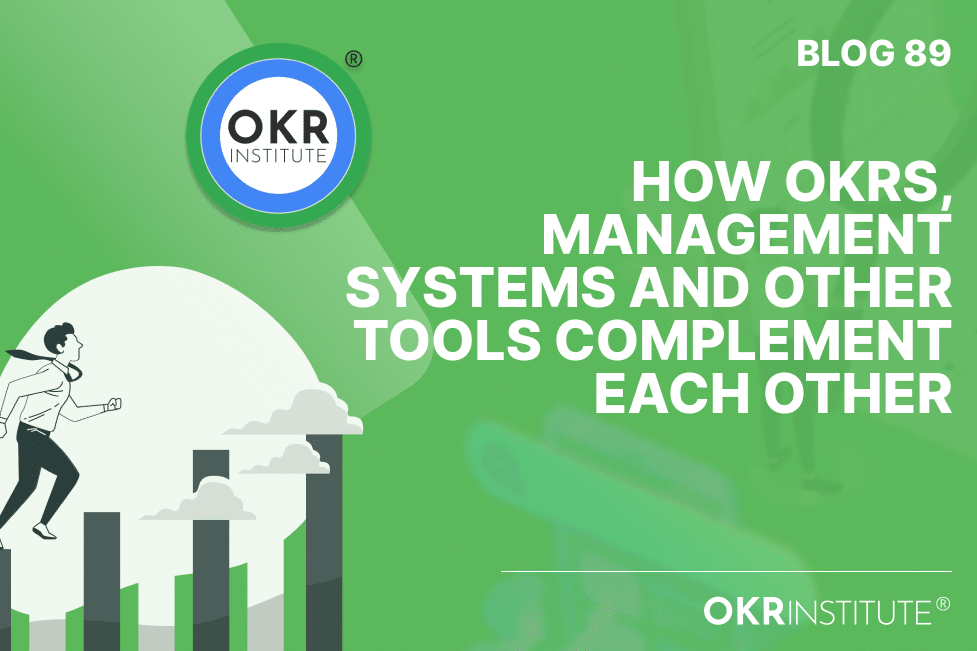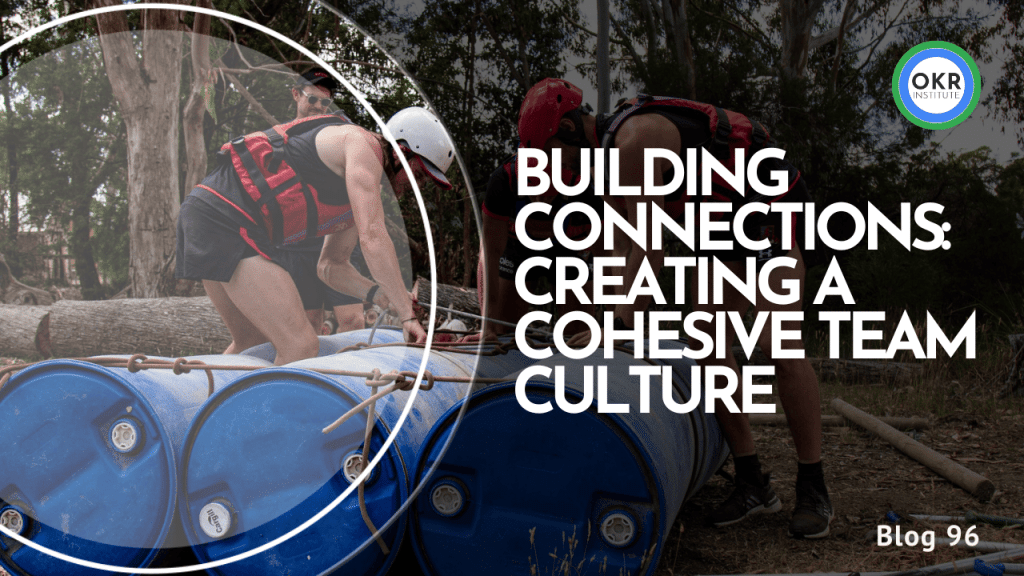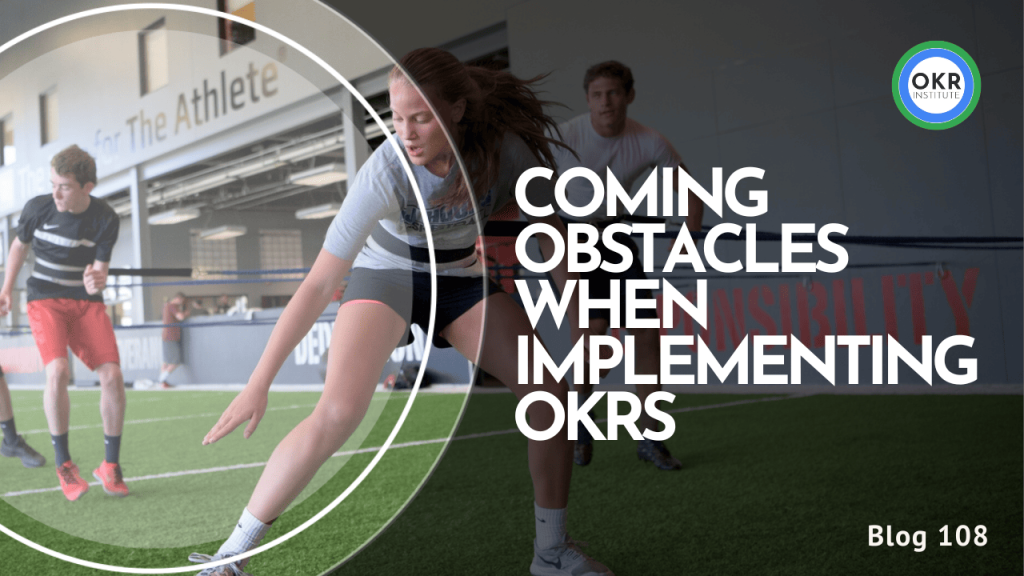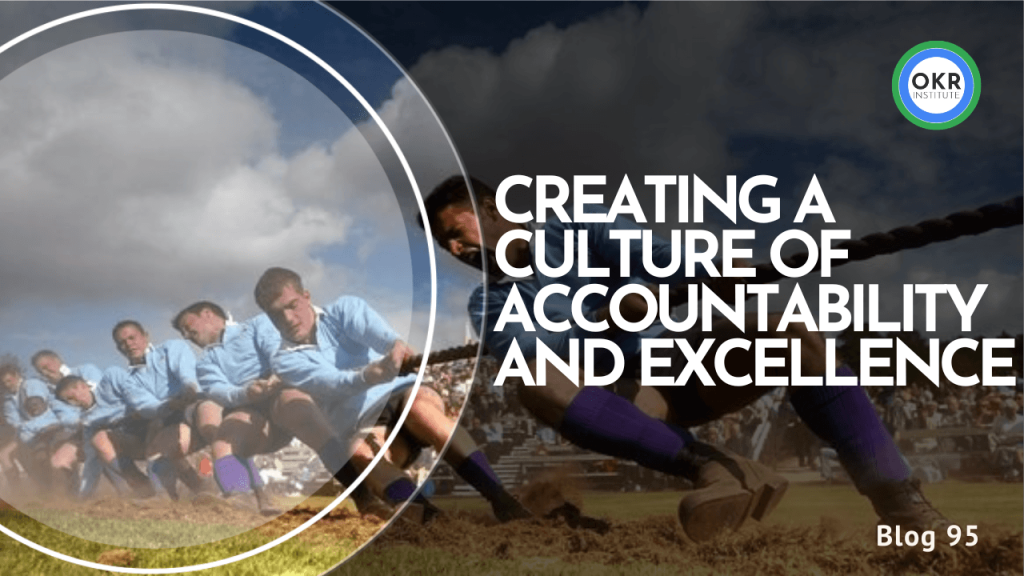How OKRs, Management Systems and other tools complement each other

How OKRs and other Methodologies are complimentary to each other
It should never be a question of whether OKRs compete with other methodologies or management systems; instead, we can spend energy on discovering how methodologies, management systems, and principles complement each other.
When we collectively align our behaviors, systems and methodologies to our strategy and Vision all these elements can become powerful tools that helps us to be more sustainable and successful.
An essential management skill is to find the ways in which methodologies, systems and tools complement each other
LEAN MANAGEMENT
Toyota made lean management globally known. They created a values-based culture and took the principles of ‘respect for people’ and ‘Kaizen (continuous improvement) extremely seriously. By acting according to these values they are in a relentless pursuit of adding value to their customers
Lean management is about increasing the value to our customers/users/clients while removing waste. Waste not only refers to a waste of money but also to a waste of time and effort. Lean management also has a strong focus on continuous improvement.
When we are genuinely outcome-focused in both drafting and pursuing OKRs, we add value to all our stakeholders. By narrowing our focus on the company’s top priorities and measuring what genuinely matters, we are removing waste from how we do business. As we learn from our mistakes and failures and apply what we know, we continuously improve through the use of OKRs.
TRANSFORMATIONAL LEADERSHIP
History sings the praises of leaders who lead their people to a desired future state. Essentially that is the core function of transformational leadership – To actualize the vision and strategy of the company.
The modern leader has to add the ability to identify useful change initiatives to his or her skillset in order to be an effective leader. Effective leadership can be defined as – Doing the right things in the right way, so that it produces the right results. We as leaders cannot do the same things over and over and expect improved results. We need to transform wherever applicable and useful to ensure the future of our company and its stakeholders.
Transformational or change leadership is mostly about:
1️⃣ Creating valuable assets for the company that was not in existence before
2️⃣ Co-creation of the desired future state of the company
3️⃣ Empowering more Leaders and creating a positive impact
All of the above rings true when OKRs are deployed effectively – We pursue far-reaching goals and co-create more value for all stakeholders. Through this very transparent process, it is revealed to us who the true leaders are or who sincerely want to become leaders.
Frequently Asked Questions (FAQs)
What are OKRs?
OKRs, or Objectives and Key Results, are a goal-setting framework used by organizations to define and track objectives and their outcomes. They help align company goals with measurable results to ensure everyone is moving in the same direction.
How do OKRs complement Lean Management?
OKRs complement Lean Management by emphasizing outcome-focused goals that add value to stakeholders. Like Lean Management, OKRs aim to eliminate waste—be it time, effort, or resources—by narrowing the focus on the company’s top priorities and continuously improving through learning and adaptation.
Can OKRs be used with Transformational Leadership?
Yes, OKRs align well with Transformational Leadership. They support leaders in achieving the vision and strategy of the company by setting ambitious goals and fostering an environment of transparency and empowerment. This alignment helps in creating valuable assets, co-creating the future state of the company, and empowering more leaders.
Do OKRs compete with other management methodologies?
No, OKRs do not compete with other management methodologies. Instead, they complement various systems and principles by aligning behaviors, systems, and methodologies with the company’s strategy and vision. This collective alignment enhances sustainability and success.
How do OKRs contribute to continuous improvement?
OKRs contribute to continuous improvement by focusing on measurable outcomes and learning from both successes and failures. This process of setting, tracking, and evaluating key results helps organizations to constantly refine their processes and strategies, driving ongoing improvement.
What is the main benefit of integrating OKRs with other methodologies?
The main benefit of integrating OKRs with other methodologies is the holistic improvement in organizational performance. By leveraging the strengths of different systems and aligning them with OKRs, organizations can achieve greater efficiency, clearer focus, and better overall results.
How can leaders use OKRs to drive transformation?
Leaders can use OKRs to drive transformation by setting ambitious and clear objectives that align with the company’s vision. This helps in identifying and implementing change initiatives, fostering innovation, and ensuring that efforts are focused on achieving the desired future state.
What are some common challenges when implementing OKRs with other methodologies?
Common challenges include ensuring alignment across different systems, avoiding over-complication, and maintaining clear communication. It’s crucial to regularly review and adjust OKRs to ensure they remain relevant and aligned with other methodologies and the overall company strategy.
Contact us to find out more about OKR and Agile Leadership:
Talent Development Director of the OKR Institute
Related Courses
Recent Posts
Tags
#OKR
#OKR Coaching
#OKR Coach







